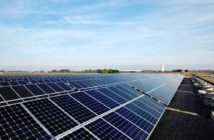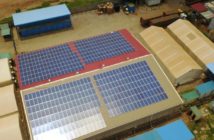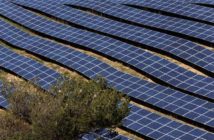Business Day
Energy & Environment
By DIANE CARDWELL

When Hurricane Sandy wiped out the power in areas like coastal Long Island and the Jersey Shore, what should have been beacons of hope — hundreds of solar panels glinting from residential rooftops — became symbols of frustration.
Despite the popular perception that installing solar panels takes a home “off the grid,” most of those systems are actually part of it, sending excess power to the utility grid during the day and pulling electricity back to run the house at night. So when the storm took down power lines and substations across the Northeast, safety systems cut the power in solar homes just like everywhere else.
“Here’s a $70,000 system sitting idle,” said Ed Antonio, who lives in the Rockaways in Queens and has watched his 42 panels as well as those on several other houses in the area go unused since the power went out Oct. 29. “That’s a lot of power sitting. Just sitting.”
Yet there are ways to tap solar energy when the grid goes down, whether by adding batteries to a home system or using the kinds of independent solar generators that have been cropping up in areas hard-hit by the storm.
In the Rockaways, where nearly 14,000 customers still had no power as of Monday morning, volunteers set up a makeshift solar charging station between a car roof and a shopping cart. A multipanel, battery-tied system is helping fuel a relief center’s operations.
In the storm’s wake, solar companies have been donating equipment across New York and other stricken areas to function as emergency power systems now and backups in the longer term. It is important, executives say, to create smaller, more decentralized ways of generating and storing electricity to help ease strain on the grid in times of high demand or failure.
“The grid won’t evolve into something more distributed and fault-tolerant overnight — it’s still dependent upon a centralized system,” said Ben Tarbell, vice president for products at SolarCity, a leading installer that has donated generators after Hurricanes Katrina and Sandy and is developing a battery backup system for its customers. “But the components are starting to come together.”
Generally, home systems like Mr. Antonio’s are engineered to feed electricity from the roof array through an inverter and into the home’s electrical panel, sending the excess to the broader electric grid. But during a failure, the inverter automatically shuts down the system to guarantee that no electricity is flowing into equipment that workers will be trying to fix. The shutdown also ensures that the system’s current will sync with the grid when power is restored and guards against damaging the lines.
Certain systems allow solar panels to run a household directly during prolonged power failures, generally combined with battery storage to keep the power functioning around the clock. Those require installing a separate electrical panel and a more complicated inverter that would switch the flow of electricity entirely over to the house, perhaps to a few critical circuits to run, say, the refrigerator, some lights, television and minimal heat.
“You size the battery system to go with that, and then the system will work just on those dedicated circuits,” said Tony Clifford, chief executive of Standard Solar, an installer based in Maryland.
The cost of adding battery storage to an existing system can range from $500 to $30,000, depending on how large the solar array is and how much the customer wants to be able to run.
Although demand for battery backup is not yet widespread, interest tends to go up after storms, said David Panico, senior vice president of the industrial power group at SunWize, a solar supplier that provided a low-cost mobile system to the Rockaway Beach Surf Club, a hub of that area’s relief effort.
But a drawback is that residents have to figure out where to put the batteries — a particular quandary for those with homes vulnerable to flooding.
So some are looking at electric vehicles as potential backup energy sources instead. In some cases, a car could fuel a house for days on a single charge.
“With something like a Chevy Volt, you might be able to power from eight to 16 hours at a time,” said William Acker, executive director at New York Battery and Energy Storage Technology Consortium, an industry group. A Tesla, which has greater battery capacity, could theoretically run for days, even without being recharged by the solar panels. “The advantage there is that that battery is doing something else most of the time.”
That sort of setup, though, is not quite practical yet. Although the technology already exists, the required inverters are 50 to 100 percent more expensive than the standard ones, and electrical codes do not yet accommodate them, said James Worden, the chief executive of Solectria Renewables, an inverter manufacturer. In addition, because solar panels do not always produce a strong, steady stream of electricity, the average home solar array does not have sufficient strength to consistently charge a car.
“Right now, it’d be better to have a very small Honda generator” that runs on gasoline as a backup, Mr. Worden said. “But if we’re going to have more and more storms that are more severe and power outages are just going to become more frequent, then there might have to be a technology shift and people will change what they’re doing.”
Some of that change, driven by environmental advocates, energy companies and residents, is already happening. The makeshift charging station on Beach 91st Street in Rockaway Beach, which has been replaced by a much larger one, for instance, came courtesy of R. David Gibbs, a renewable energy engineer at Solar One, a nonprofit educational group, and Walter Meyer and Jennifer Bolstad of Local Office, a husband-and-wife landscape architecture firm. They have been raising money and bringing more mobile solar generators to the Rockaways as part of a larger effort to meet its energy needs.
Even in the middle of a disaster, a small charging station can help, residents said, giving them the ability to charge cellphones or electronic game devices to entertain their children.
“Being on the outskirts puts us at a loss,” said Tim Hill, a property manager who has been an organizing force on Beach 91st Street.
Just having the station in the storm’s aftermath opened Mr. Hill’s eyes to the possibilities for an even larger, more permanent generator.
“Being able to have enough electricity to jump-start a car, run an electric heater for the night or have a Wi-Fi hot spot,” he added, “would allow people to maintain that sense of normalcy that is so necessary, from an emotional and psychological perspective to a physical, survival perspective.”
.






